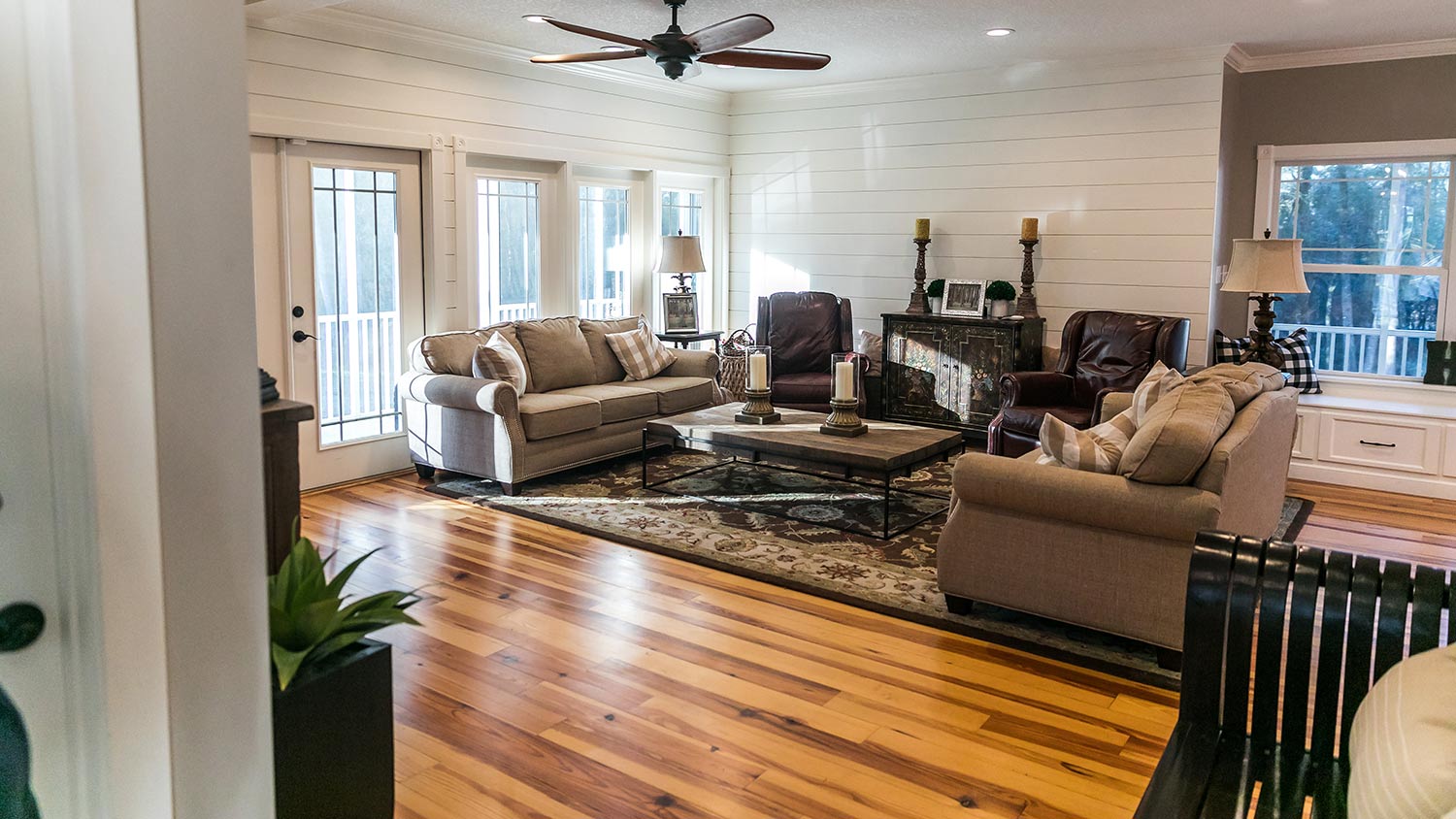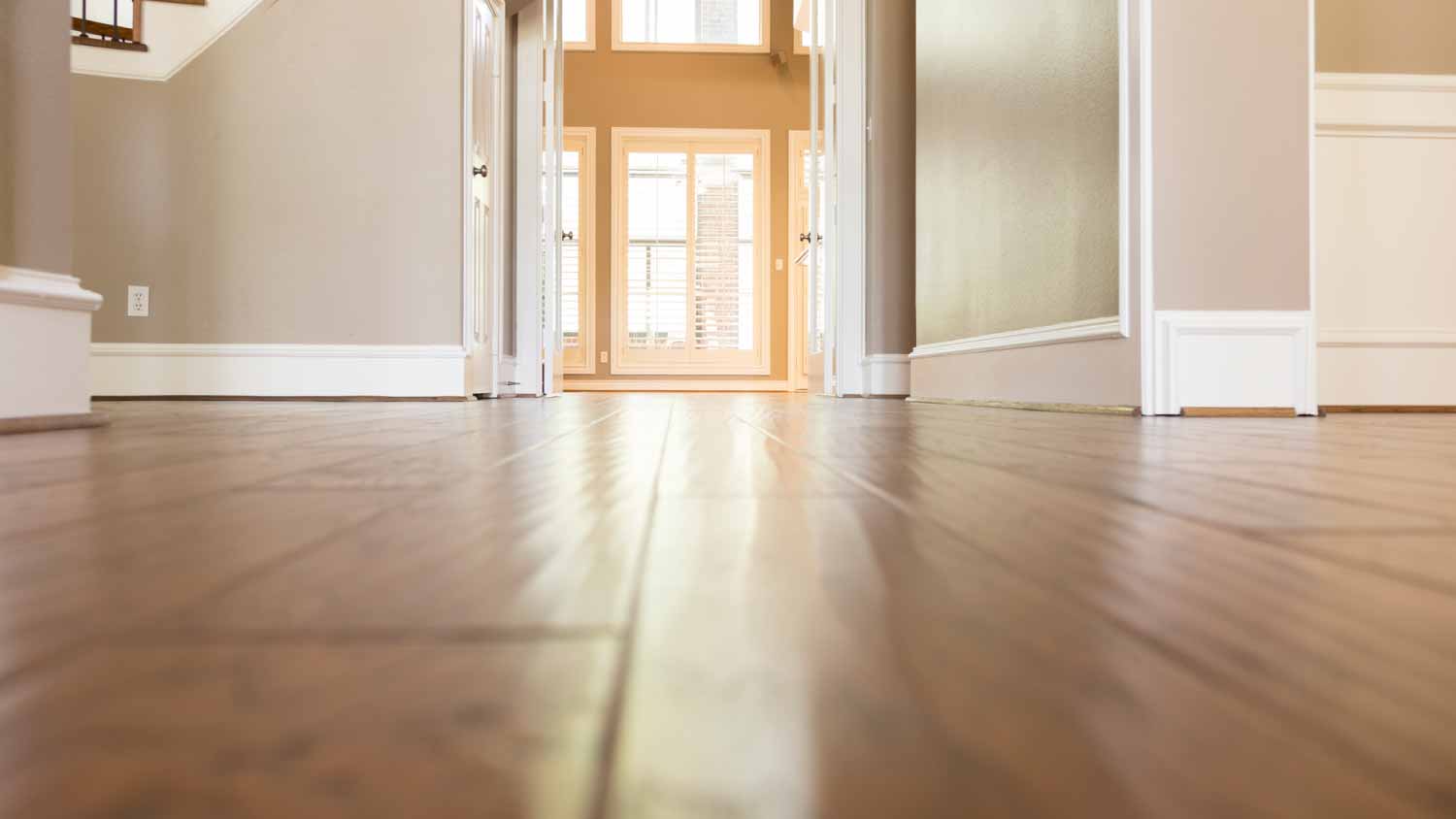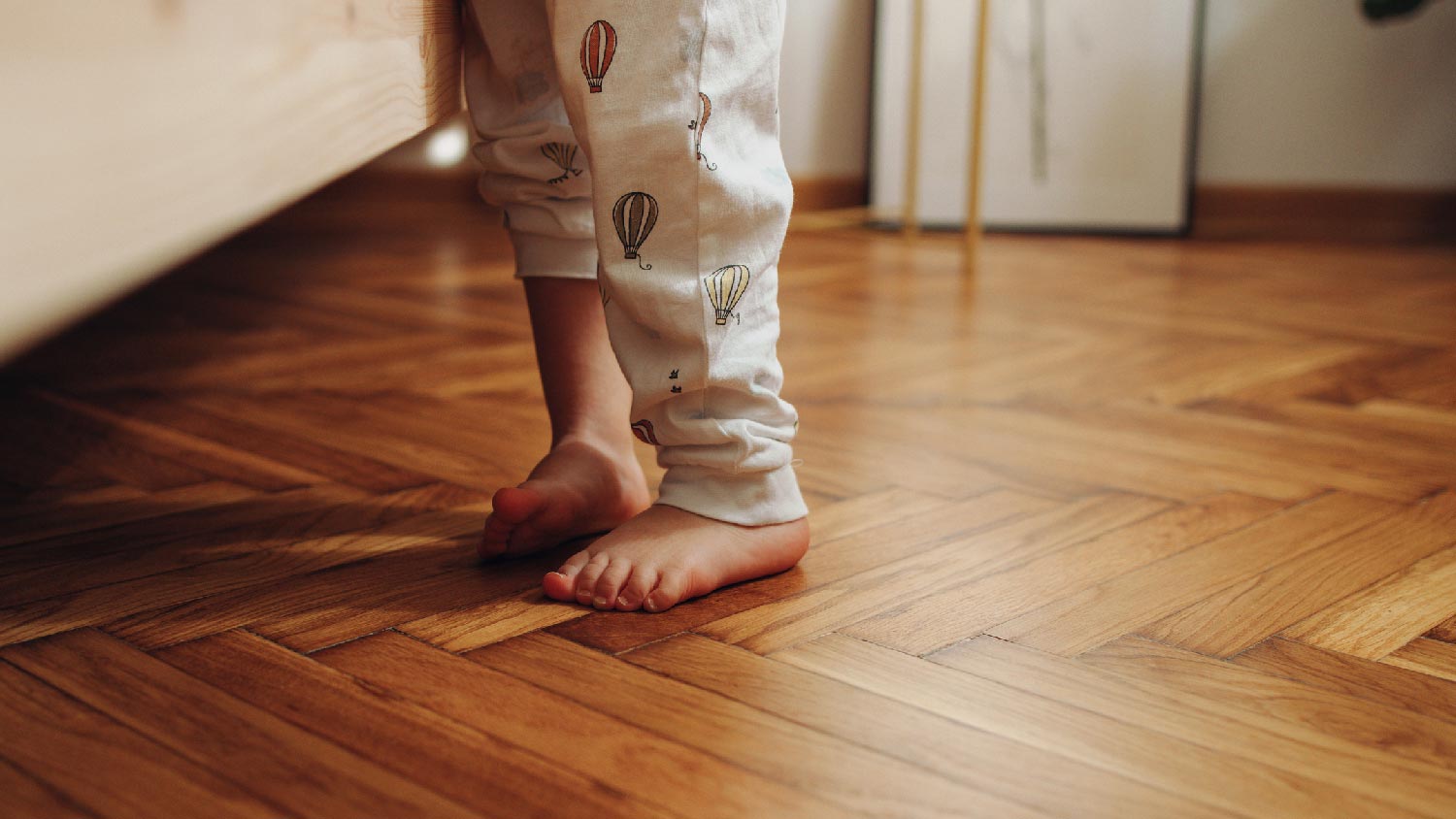9 Hardwood Flooring Tips to Make Installation Easier
Follow these tips to help make installing hardwood flooring easier


Everybody loves the classic, elegant look of hardwood flooring (and the added value it creates for your home). A full installation of hardwood floors involves tricky measurements and careful handling of the wood. These nine tips will help ensure you’re well-prepared to install your hardwood with less hard work.
1. Select the Proper Hardwood Flooring for Each Room
You’ll want to make sure you select the right hardwood for the rooms you’ll be installing in. For instance, you shouldn’t choose prefinished planks for the kitchen, as these have beveled edges, and spills can leak down into the planks.
High-traffic areas like mudrooms are best suited for extra durable types of wood like hickory, hard maple, or white oak.
2. Understand the Installation Methods
Nail-down, glue-down, and click-lock are the three main types of hardwood flooring installation, though glue-down and click-lock are most common with engineered wood flooring.
Popular for its permanence, the nail-down method requires a wooden subfloor. If your subfloor is not made of wood, you must either create a wood subfloor with plywood or remove the existing flooring to get to the wood beneath. Once complete, the nails are practically invisible. This method is very cost-effective.
The glue-down method can be used with hardwood as well, and can be done if you have a cement or wood subfloor. This method involves using a strong adhesive to affix the hardwood on top of the subfloor.
3. Decide to DIY (or Not)
Installing hardwood flooring is not an easy undertaking. Unless you’ve done it before or have extensive experience with DIY home projects (especially those involving wood), it might make more sense to hire a local wood flooring pro.
That said, if you think you have the chops, there are many resources online to help guide you, and you’ll be saving a fair amount of cash, as the cost to install hardwood flooring ranges from $2,500 to $6,800.
4. Read the Directions
All manufacturers should issue hardwood flooring installation directions with their materials. Take some time to understand how they should be installed before embarking on the project. You should also be aware that some manufacturers’ warranties are dependent on proper installation according to the instructions they provide.
5. Prepare the Room
Move tables, chairs, and other furniture out of the way while you embark on this major project. Get rid of any old flooring, but be gentle with any pieces—such as wall base or trim—that you plan to reuse.
6. Inspect Your Subfloor
If your subfloor needs some TLC, you’ll need to deal with this before installing hardwood. Your subfloor should be mostly level, with no variations over three-sixteenths of an inch per 6 feet.
If there are only minor variations in the subfloor, you can sand down raised spots and fill in low ones.
7. Acclimate the Wood

The amount of moisture in the air will cause the wood to either expand or contract, and if your hardwood doesn’t have a chance to get used to its new environment, it could gap in wintertime and cup in summertime.
To prevent this, open the hardwood flooring boxes and spread them out in the room they’ll be installed in for about a week before installation. Make sure the temperature is set to whatever you normally have it at (i.e., if you usually run the air conditioner at 70 degrees Fahrenheit, don’t change that habit). Ideally, the room’s temperature should stay between 65 and 75 degrees Fahrenheit, with 30 to 55 percent humidity.
Even after proper acclimation, the wood will still expand and contract, depending on the level of moisture. This is why you should leave a quarter-inch around the perimeter of your hardwood install; this will be hidden by your baseboard and molding.
8. Check That You Have All the Supplies Required for the Job
It’s very frustrating to get one-third of the way through a big project only to discover that you’re missing an important tool. Typically, installing hardwood flooring requires these tools, though this is not an exhaustive list. Make sure to consult your manufacturer’s instructions to cross-reference.
Miter saw
Table saw
Stapler
Finish nailer
Compressor
Chalk line
Laser level square
9. Ensure a Straight First Row
If your first row of hardwood flooring is crooked, all the other rows will follow suit. The reverse of this is also true: install your first row straight, and you’ve set up a good template for the rest of the room.
Remember that you should not use a wall as your straight edge as walls are rarely straight; instead, many flooring professionals recommend laying the first plank in the middle of the room.
To set this up, you’ll want to measure the distance between the walls parallel to the floor on either side of the room and find the point that is half the distance from one wall to the center of the room. Make a chalk mark here, and then use a laser square to draw a line between these marks—this is where your installation begins.
Don’t feel like DIYing hardwood flooring installation? Look into hiring a flooring installation company in your area.





- How to Remove Hardwood Flooring for Reuse: A Complete Guide
- 5 Things You Should Know Before Selecting Hardwood Floors
- Hardwood Flooring Installation: Why You Should Leave it to Professionals
- How to Choose Hardwood Flooring in 7 Simple Steps
- 11 Types of Flooring to Consider for Your Home
- How to Replace a Subfloor: The Complete DIY Guide
- The Differences Between Laminate and Hardwood Flooring, Explained
- Estimate Your Flooring Cost With These Factors
- How to Prevent Squeaky Floors: 6 Subflooring Installation Tips That Can Help
- How to Care for Hardwood Floors So They Always Look Gorgeous















